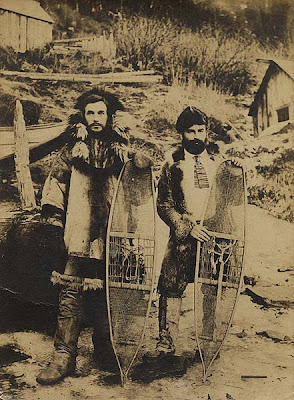
“Swiftwater Bill” Gates, or Charles H. Gates was born in 1855 in Minerva New York. He was working as a boatman in Idaho in 1896 when he decided to go to Alaska. He and some partners leased “Thirteen El Dorado” which later paid out and made him a millionaire. Enjoying his new wealth, he would walk the streets of Dawson in top hat, white shirt and jacket (and said to bathe in champagne). He apparently loved women and gambling. He had the hots for Miss Gussie Lamore in Dawson and offered her her weight in gold to marry him. She however spurned him, and was seen in the restaurant with a new boyfriend ordering fried eggs – the most expensive item on the menu. So, to get even, Bill bought up all the eggs in Dawson and fed them to dogs, in another version fed them to the other dance hall girls. Miss Gussie loved eggs and so he hoped to get her attention. Apparently it worked as she offered to meet him in San Francisco and marry him (despite already being married). He married her younger sister, Grace, then divorced her and remarried and divorced several times in the next few years.
Swiftwater Bill was known to be at the gold fields of Nome, Alaska at the same time as William H. Gates I, grandfather of the Microsoft founder. However, despite the similarity in name and coincidences of geography, there is no apparent family relationship between “Swiftwater Bill” and Microsoft founder Bill Gates.
In any event, some versions say that in 1933 he went to Peru and was mining silver there, when on this date, February 13, 1933 he died in mysterious circumstances, perhaps murder…..another account says he was murdered on February 21, 1937 and still another that he died of pneumonia following surgery back in Neillsville, Clark County, Wisconsin on February 13, 1933.
In any event, he certainly lived an exciting life.
Seen above with Joe Boyle-left, “Swiftwater Bill” on the right.
Source: Neillsville Press (Neillsville, Clark County, Wis.) 16 Feb. 1933 obituary of “Swiftwater Bill” Gates.
http://wvls.lib.wi.us/ClarkCounty/clark/data/1/bbs16/16906.htm







